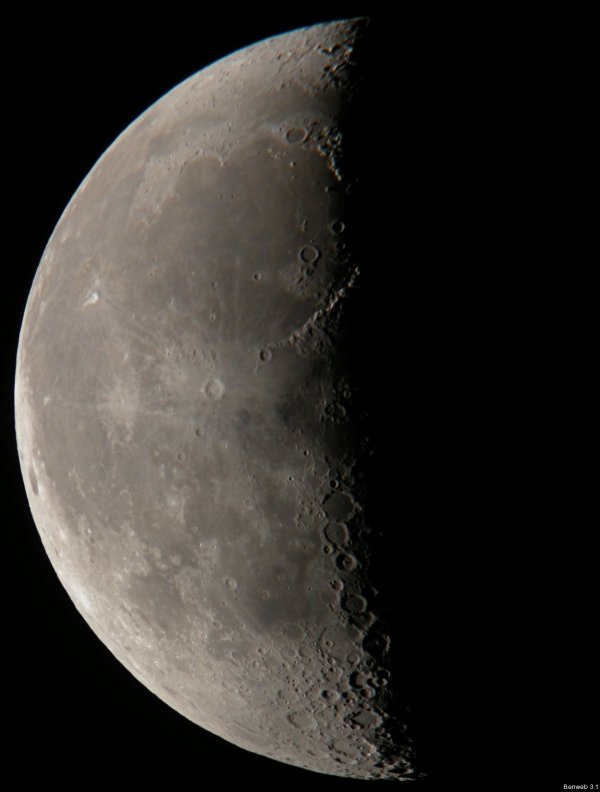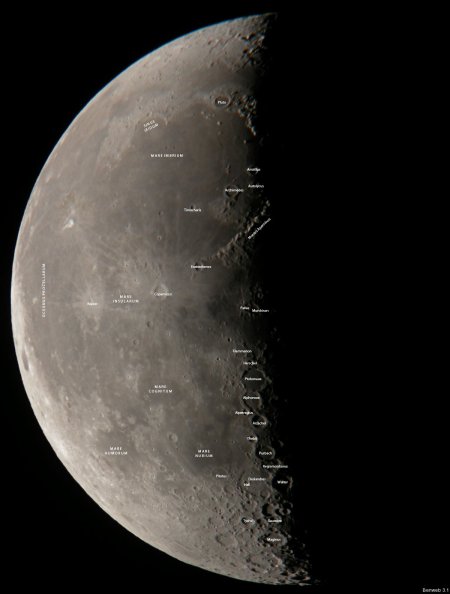This morning, after starting awake at 4:19 a.m. and staggering out to the backyard, I took what I think is the best picture of the moon I’ve made to date. And while I was out back rubbing the sleep out of my eyes, I discovered something that I had read about in books (and therefore “knew), but never really understood until it became part of my personal experience. (This happens to me a lot; book learning is great—says the Ph.D.—but nothing, I mean but nothing, makes book learning more real than actually having something you’ve read about in books happen to you.) This morning, I learned that the oft-repeated advice that “the seeing is better after midnight” is sometimes actually true. I was able to focus the digiscoping rig with ease, even though the moon was only 33° above the hypothetical horizon (I say hypothetical horizon because my actual horizon is probably around 25° thanks to the large ficus hedge in my neighbor’s backyard and the narrowness of my back yard).
This morning’s moon was about 10 hours past last quarter; yesterday’s cloudy moon was about 13 hours before last quarter. But today the sky was clear, and that made all the difference. (Well, not completely clear; I still had to wait about 20 minutes, taking frame after frame between clouds scudding by to get “the shot.”)
Tonight the craters of the southern hemisphere are arrayed along the terminator in almost an unbroken line. Starting roughly at the equator, there is Flammarion, Herschel, Ptolemaus, Alphonsus, Alpetragius, Arzachel, Thebit, Purbach, Regiomontanus, and Walter before the southern highlands get too crowded with small craters for the labeling to be legible. But it truly is an amazing slide from the equator down to 33°!
Making today’s moon map was a pleasure, today’s picture was so fun to navigate:
I’m still not confident I’ve got the craters in the north correct, which is why they’re not labeled on the map. Despite the fairly favorable libration, I just don’t have that area well enough imaged to be sure what’s where. Just one more of the mysteries of the moon for me; I hope to unravel it later.



